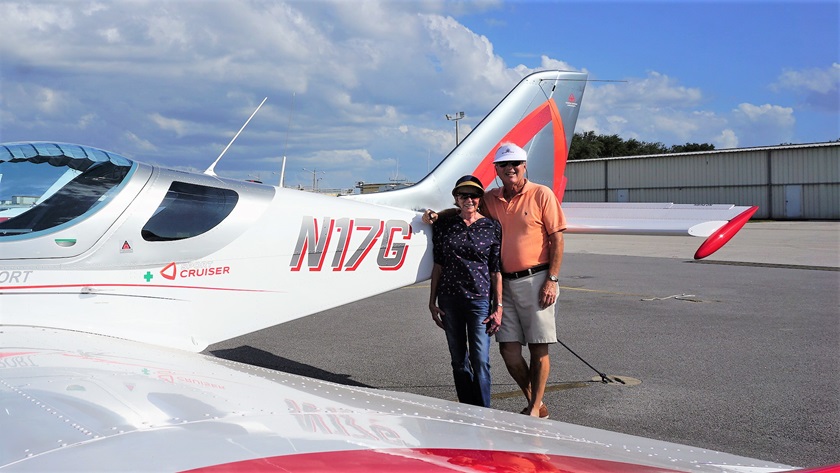Pilot buys aircraft to socially distance during COVID-19
Transitioning from a Columbia 350 to a light sport Sport Cruiser
Every pilot’s decision-making process for purchasing a new aircraft should be based on his or her own personal flying experience, mission requirements, and experiences over time.

There seems to be a natural progression, but it is not linear, and the paradigm significantly shifted when aircraft composites became more highly developed, glass panels started replacing the old “six-packs,” and data became more affordable and accessible through programs like ForeFlight.
After reading about the Columbia 300 type certificate in AOPA Pilot in 1998, and following the eventual evolution of the Columbia 350 and 400 aircraft being manufactured in Bend, Oregon, my wife and I decided the Columbia 350 would be our final upgrade. We purchased a new Columbia 350 in 2007. We owned the Columbia 350 for seven years before downsizing and moving to Florida, where we eventually used the airplane for lunch flights, and the “$100 hamburger” exploded to over $1,000! Our mission changed, and I then felt I was not flying enough to safely maintain my IFR currency, so we sold the Columbia 350 and I stopped flying at age 65 with 2,600 hours of accident-free, violation-free flying.
My wife and I were proud of our 40-year flying adventure, and we were content sailing and boating in Tampa Bay after we sold the airplane five years ago. Things changed, however, when the coronavirus pandemic struck and we began running out of safe, socially distanced activities that we could enjoy together.
I suggested to my wife, “Maybe we should consider buying a light sport aircraft that seats only the two of us, and we can again fly to lunches around Florida. Wouldn’t that be great?” She was totally on board, commenting that “any guy in his 70s needs a project to keep his mind working, and it sounds like fun.” I renewed my AOPA membership and reviewed all of the LSA requirements on AOPA’s website, deciding that the LSA limitations of VFR, daytime only, and maximum altitude of 10,000 feet perfectly satisfied our new mission.
I remembered seeing a PiperSport in 2010 that I thought looked like a “real” airplane that would be fun to fly. Even though Piper dropped this model after a year or two, it continued to be built in the Czech Republic with a worldwide fleet of over 600 airplanes. The Sport Cruiser even has a U.S. location in Bountiful, Utah, called Cruiser Aircraft, that provides full product and sales support.
I found a 2017 Sport Cruiser in Florida with 45 hours total time that looked brand-new. (Most importantly, my wife approved of the paint scheme!) With two Dynon SkyView HDX glass panels, the Sport Cruiser does virtually everything the Columbia 350 did, except it cruises at 100 knots instead 170 knots; the 100-horsepower Rotax engine uses 5 gph instead of 15 gph, and problematic hot starts became a nonissue. The air conditioning will be missed in Florida, but gaining a ballistic parachute and the “Level” button on the autopilot are huge safety benefits, especially for my wife who is a willing passenger, but not a pilot.
During my research to insure the aircraft, I found that industry insurance coverage seems to be capped at $1,000,000/$100,000. LSA premiums may also seem comparatively high, but it was explained that the aviation underwriters found experienced pilots wanting to over-correct such light aircraft, which caused many more claims than expected. Another potential issue is finding a CFI with enough model-specific time to qualify on the owner’s policy while training the new owner, and that the owner will normally require a specified number of hours and probably a current flight review to even fly as pilot in command in their newly purchased LSA.
Every expense of the Sport Cruiser probably runs one-third of the Columbia 350, and my wife and I are having a great time flying VFR at 2,000 feet to 3,000 feet, seeing things on the ground again instead of primarily flying IFR in the clouds. What a perfect way to spend quality time with my wife flying “socially distant” to lunch around Florida!—By Rick Polinsky
Rick Polinsky is an instrument-rated commercial pilot who lives in Florida.


